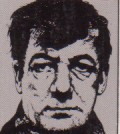|
● Early
Fiction
● Transcendentalists
● Power
of Imagination
● New
Visions of America
● Reform
and Liberation
● Regionalism
● A
New Wave
● Sympathetic
Views
● Rebellious Spirit
● The
Modernists
● The Lost Generation
● Harlem Renaissance
● New
Drama
● Depression,
Realism and Escapism
● Postwar Voices
and the "Beat Generation"
● New American
Voices
Rebellious Spirit
 |
|
Sherwood
Anderson
|
 In
the first decades of the 20th century the United States became increasingly
urban. Two major works of literature expressed this new attitude
of rebellion against the limited life of the typical small American
town. In 1919, a writer named Sherwood
Anderson published a book of short stories called Winesburg,
Ohio. This was a series of portraits of different personalities
in one midwestern town, creating an overall impression of narrow-minded
ignorance and frustrated dreams. The second "revolt from the
village" work was a novel called Main Street, by Sinclair
Lewis, published in 1920. Again, the setting was a small
midwestern town, this
one called Gopher Prairie, a name that suggested crudeness and lack
of culture. In this book, and in others such as Babbitt
and Arrowsmith, Lewis drew vivid caricatures and satirized
the traditional "American dream" of success. To urban
Americans and Europeans both, Lewis seemed to sum up what small-town
America was all about. He was awarded the Nobel Prize for Literature
in 1930, the first American to be so honored. In
the first decades of the 20th century the United States became increasingly
urban. Two major works of literature expressed this new attitude
of rebellion against the limited life of the typical small American
town. In 1919, a writer named Sherwood
Anderson published a book of short stories called Winesburg,
Ohio. This was a series of portraits of different personalities
in one midwestern town, creating an overall impression of narrow-minded
ignorance and frustrated dreams. The second "revolt from the
village" work was a novel called Main Street, by Sinclair
Lewis, published in 1920. Again, the setting was a small
midwestern town, this
one called Gopher Prairie, a name that suggested crudeness and lack
of culture. In this book, and in others such as Babbitt
and Arrowsmith, Lewis drew vivid caricatures and satirized
the traditional "American dream" of success. To urban
Americans and Europeans both, Lewis seemed to sum up what small-town
America was all about. He was awarded the Nobel Prize for Literature
in 1930, the first American to be so honored.
Previous Page Next
Page
|

